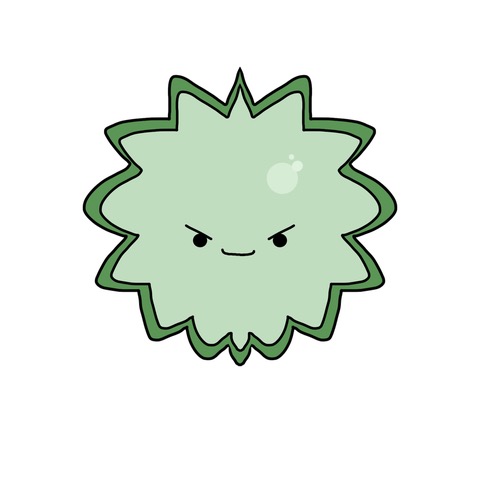Gay Men and Sexually Transmitted Infections
A reference guide for Physicians testing and treating gay men with sexually transmitted infections.
Testing gay men for sexually transmitted infection (STI) can differ from other patients depending on the type of sex they are having. It is also very important to remember that in many cases, STIs can be asymptomatic. The common belief, “If I had an STI, I would know it” is simply incorrect. Thus, routine screening of men who are sexually active with more than one partner is generally a very good idea.
What tests should I do? That depends on the type of sex your patient is having but in general should include urine as well as pharyngeal and rectal swabs for gonorrhea and Chlamydia, plus a blood test for syphilis.
How often should gay men be screened for STIs? That depends on how many partners they have and how often. In general, men who are sexually active with more than one partner should consider STI screening every 3 to 6 months.
- Insertive and receptive oral sex
- Insertive and receptive anal sex
- Urethra
- Pharynx
- Rectum
- Urethritis: dysuria, clear to purulent urethral discharge
- Rectum: usually asymptomatic ( May cause anal discomfort, tenesmus, mucopurulent discharge )
- Pharynx: asymptomatic
- Gonorrhea
- PHAC Guideline – Ceftriaxone 250 mg IM PLUS Azithromycin 1g PO
- CDC Guideline – Ceftriaxone 500 mg IM alone
- Alternate – Cefixime 800mg PO
- Chlamydia
- Urethra and pharyngeal – Azithromycin 1g PO
- Proctitis – Doxycycline 100 mg BID for 7 days
 Transmission
Transmission
- Oral and anal sex, kissing, close intimate contact
Symptoms
- Primary: Chancre. A painless red papule or shallow ulcer on penis, around anus, and/or in mouth.
- Secondary: Systemic symptoms. May include a generalized or localized rash, headache, myalgias, etc.
- Early latent: asymptomatic and infected within the last 12 months
- Late latent: asymptomatic and infected more than 12 months ago
- Organ involvement: Uveitis and/or retinitis; hepatitis; meningitis; nephritis, etc
Testing
- Blood test. Request “syphilis serology” on an Ontario Public Health Laboratory requisition.
- Negative: A nonreactive syphilis screening test.
- Positive: This will include (1) a reactive syphilis screening test, (2) a reactive confirmatory Treponema pallidum particle agglutination (TP-PA) if not done previously, and (3) an RPR titer.
Treatment
- Primary, secondary and early latent:
- Benzathine Penicillin (Bicillin) 2.4 million units IM as a single dose.
- Alternate: Doxycycline 100 mg BID for 14 days
- Late latent:
- Benzathine penicillin (Bicillin) 2.4 million units IM weekly for 3 weeks.
- Alternate: Doxycycline 100 mg BID for 28 days
- Neurosyphilis, ocular syphilis and/or other organ involvement should be managed by, or in consultation with, an infectious diseases specialist.
- Physical contact. Active lesions increase risk of transmission.
- Painful vesicular rash and ulcers on penis, scrotum, and/or around the anus.
- Swab active lesions and send in viral transport media for either culture or nucleic acid amplification (NAAT).
- First outbreak:
- Acyclovir 200mg PO 5 times a day for 5-10 days
- Famciclovir 250mg PO TID for 5 days
- Valacyclovir 1000mg PO BID for 10 days
- Recurrent outbreak:
- Acyclovir 800 mg TID for 2 days
- Famciclovir 125 mg BID for 5 days
- Valacyclovir 1000 mg daily for 3 days
- Suppressive therapy:
- Acyclovir 400 mg BID
- Famciclovir 250 mg BID
- Valacyclovir 500 mg daily if <9 recurrences per year / 1000 mg daily if >9 recurrences per year
- Physical contact
- Warts on penis and/or around anus
- None. Diagnosis is by visual inspection.
- Patient applied:
- Podofilox 0.5% solution or gel apply to wart BID for 3 days, followed by 4 days of no treatment. Repeat up to 4 times.
- Imiquimod 5% cream apply once daily at bedtime, 3 times a week for 16 weeks. Wash area 6-10 hours after application.
- Sinecatechins 15% ointment apply to warts TID for no more than 16 weeks
- Provider applied:
- Cryotherapy with liquid nitrogen. Repeat every 1-2 weeks.
- Podophyllin resin 10-25% apply to warts, use <0.5mL per session, wash area 1-4 hours after application. Repeat weekly.
- Trichloroacetic acid 80-90% apply to warts, repeat weekly.
- GARDASIL®9 (Human Papillomavirus 9-valent Vaccine, Recombinant)
- 0.5 mL IM administered at 0, 1-2 and 6 months.
- Gardasil-9 is recommended for all gay men regardless of age.
- Free through Public Health for gay men <26 years of age
- Covered by some insurance plans for men >26 years of age. Cost: ~$600
- Hep A: Oral-Anal contact, poor sanitation, contaminated food or water
- Hep B: exchange of bodily fluids through sexual intercourse or needle sharing
- Hep C: exchange of blood through needle sharing. Low transmission by exchange of bodily fluids through sexual intercourse.
- Ranges from asymptomatic with increased transaminases on blood work to fulminant liver failure with nausea, fatigue and jaundice.
- Blood test using an Ontario Public Health Laboratory requisition.
- Hep A:
- positive HAV IgM antibodies indicate acute infection
- positive HAV IgG antibodies indicate immunity
- Hep B:
- Positive surface antigen indicates chronic active Hep B infection
- Positive surface antibody and core antibody indicate resolved Hep B infection
- Positive surface antibody and negative core antibody indicate immunized with Hep B vaccine.
- Hep C: positive HCV antibodies, then Hep C nucleic acid amplification to confirm active infection.
- Hep A: self-limited. No treatment
- Hep B: suppressive therapy with entecavir, tenofovir or lamivudine
- Hep C: curative treatment with direct acting antivirals. Choice depends on genotype.
- Hepatitis A: HAVRIX, 1 mL (1440 ELU) at 0 and 6 months
- Hepatitis B:
- Engerix-B, 1 mL (20 mcg HBsAg) at 0, 1 and 6 months
- Recombivax HB, 1 mL (10 mcg HBsAg) at 0, 1 and 6 months
- Hepatitis A and B: Twinrix, 1 mL at 0, 1 and 6 months
- Hepatitis C: no vaccine
- Insertive and receptive oral and anal sex
- Small ulcers on penis or inside anus
- Inguinal lymphadenopathy or anal inflammation causing pain, constipation, anal discharge and/or bleeding.
- LGV is caused by a more virulent strain of Chlamydia known as the L serovar. Detection is as for typical forms of Chlamydia with nucleic acid amplification (NAAT).
- Urethra: collect first voided urine (20-60mL), not midstream
- Rectum: swab. First moisten the swab with tap water. Then insert 4 cm into the rectum.
- Doxycycline 100mg BID for 3 weeks
- Oral-anal contact (known as “rimming”)
- Watery diarrhea, abdominal cramping/bloating, and flatulence
- Collect 3 separate stool samples and send stool for detection of Giardia lamblia trophozoite or cyst. Use an Ontario Public Health Lab requisition.
- Metronidazole 500 mg twice daily for 5-10 days






